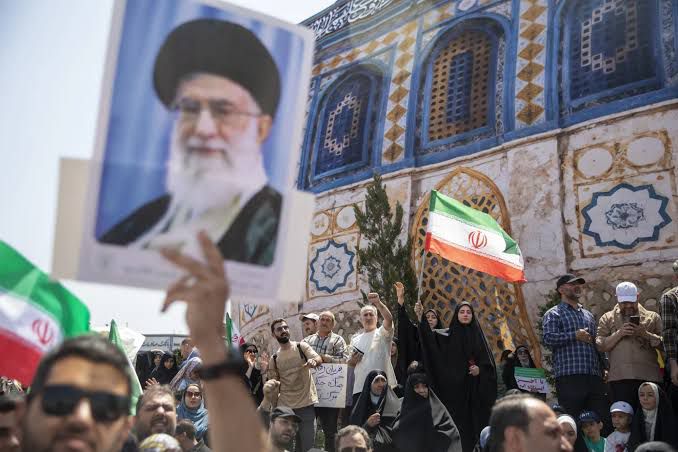The question of whether the United States and Israel are actively pursuing regime change in Iran has been a matter of intense debate in geopolitical, academic, and intelligence circles for decades. With rising regional
Regime Change in Iran
tensions, proxy conflicts, nuclear fears, and cyber warfare, it’s crucial to understand whether this desire exists and how it manifests in reality.
This article explores the historical context, recent actions, political intentions, and the strategic implications behind alleged efforts to topple or destabilize the Iranian regime.
Historical Background: Roots of Hostility
The 1979 Revolution – A Turning Point
After the Islamic Revolution in 1979, Iran severed diplomatic ties with the United States and transformed into an anti-Western, anti-Israeli theocracy. The hostage crisis at the U.S. embassy in Tehran laid the foundation for a hostile U.S.-Iran relationship that continues to this day.
Israel’s Strategic Concerns
Iran has consistently supported militant groups like Hezbollah and Hamas, both of which are directly opposed to Israeli interests. Iran’s Quds Force and the broader Islamic Revolutionary Guard Corps (IRGC) have actively supported anti-Israel operations in Lebanon, Syria, and the Palestinian territories.
Regime Change: A Hidden or Open Agenda?
While neither the U.S. nor Israel explicitly states “regime change” as an official goal today, numerous actions suggest it remains a desired outcome, especially among hawkish policymakers and military strategists.
1. Cyber Warfare
One of the clearest signs of covert hostility was the Stuxnet virus, allegedly developed jointly by Israeli and American intelligence to sabotage Iran’s Natanz nuclear facility. This marked a new kind of warfare — one that doesn’t require boots on the ground.
2. Targeted Assassinations
High-profile figures such as Iranian nuclear scientists and General Qassem Soleimani (killed by a U.S. drone strike in Iraq) have been eliminated in operations widely seen as efforts to weaken Iran’s military and ideological leadership.
3. Sanctions and Economic Isolation
The U.S. imposed the toughest sanctions regime in history under its “Maximum Pressure” campaign during the Trump administration. These were designed not only to curb Iran’s nuclear ambitions but to trigger internal dissent by crippling the Iranian economy.
4. Support for Protests and Opposition
Major Iranian protest movements — including the Green Movement (2009) and the Mahsa Amini protests (2022) — have received explicit moral and digital support from Western powers. U.S. media outlets, officials, and social platforms amplify these voices, often calling for regime accountability.
Israel’s Role in Iran’s Destabilization
Israel considers Iran an existential threat, primarily due to Tehran’s missile capabilities and its potential for developing nuclear weapons.
Key Strategies by Israel Include:
- Intelligence penetration into Iran’s nuclear and defense programs.
- Covert sabotage operations within Iranian territory.
- Regional containment through normalization with Arab nations (e.g., Abraham Accords), isolating Iran diplomatically.
Why Regime Change Hasn’t Succeeded So Far
Despite extensive pressure, the Iranian regime has not collapsed. Several factors contribute to its resilience:
1. Internal Control
The Supreme Leader and IRGC maintain a tight grip on the military, judiciary, and media.
2. Nationalist Sentiment
Even many anti-government Iranians oppose foreign intervention, viewing it as neo-colonialism.
3. Regional Proxy Strength
Iran holds significant influence in Iraq, Syria, Lebanon, and Yemen — giving it strategic depth that protects the regime from total isolation.
Current Scenario: An Ongoing Cold War
While no direct military invasion is underway, the situation resembles a hybrid Cold War:
- Cyber conflict is routine
- Espionage and surveillance are intensifying
- Iran’s isolation through diplomacy and economic embargoes continues
- Proxies and militias are battling in Syria, Lebanon, Iraq, and Gaza
The Nuclear Red Line
One of the most dangerous triggers for direct action remains Iran’s alleged pursuit of a nuclear bomb. Israel has repeatedly said it will not allow a nuclear Iran, and the U.S. has supported diplomatic and, at times, military pressure to prevent this scenario.
If Iran were to cross the so-called “nuclear red line,” more aggressive action — possibly even open conflict — could become a reality.
Conclusion: Silent War, Unspoken Goals
The idea of regime change in Iran is not declared overtly by either the U.S. or Israel in recent official policy. However, the combination of cyber operations, sanctions, support for internal dissent, and military pressure reveals a broader strategy of weakening and, perhaps eventually, replacing the current Iranian regime.
In essence, regime change may not be loudly spoken—but it is quietly pursued.

